
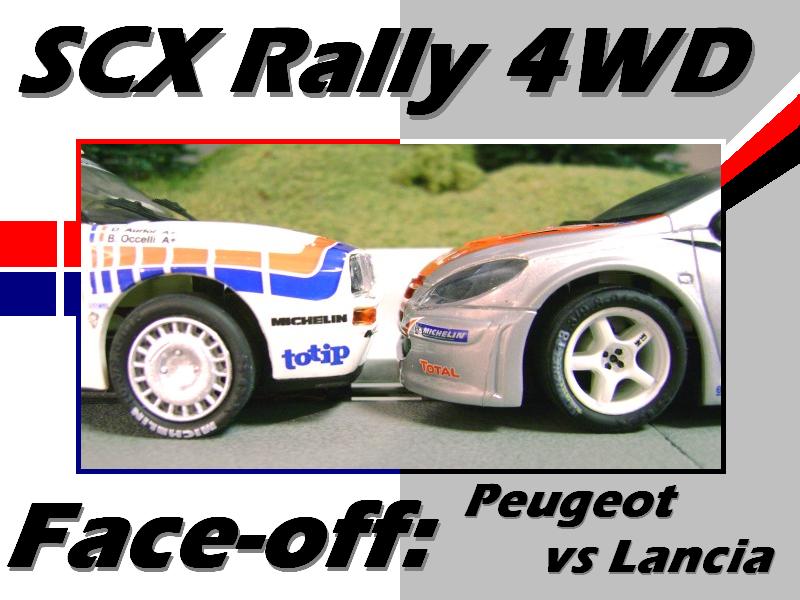 SCX 4WD Face-off Peugeot 307 WRC Vs. Lancia Delta HF Integrale By Shawn Smith 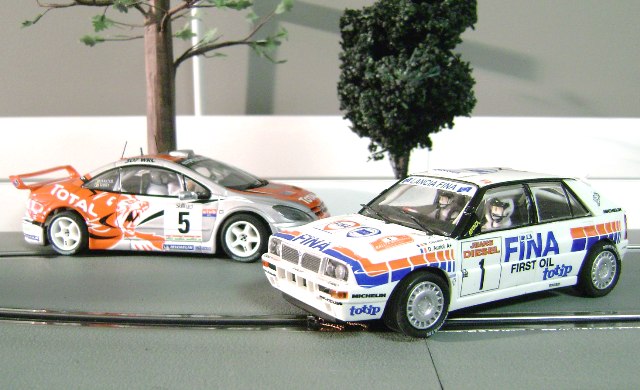 Just a little less than a year ago, May 4, 2009 to be exact, I did a little write up on a pair of SCX Rally Cars cars putting an all wheel drive Lancia Delta S4 up against a little rear wheel drive Renault T5 and I gave the nod to the Lancia at the end of that review. Now, almost a year later SCX decided to keep the feature alive sending two new rally releases with a Lancia Delta HF Integrale to put through the paces, this time against a Peugeot 307 WRC. Will the Lancia Delta come out on top two years in a row or will the more modern Peugeot dethrone the king of the rally-hill? 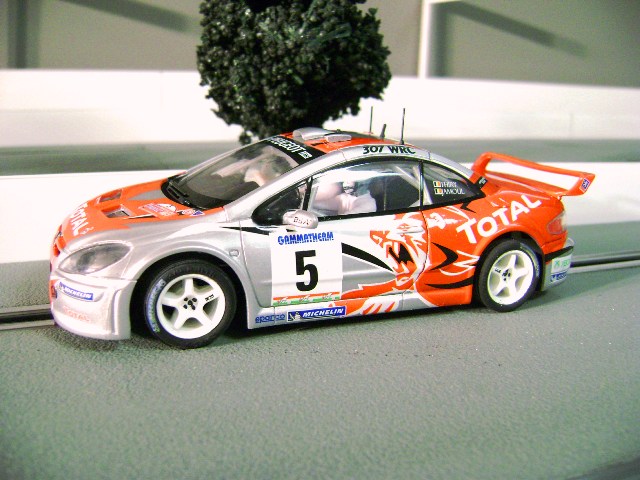 Starting with the Peugeot, the livery is from my standpoint the most eye-catching. The primarily silver and red paint work is accented with white and black with the design taking on the head of a roaring lion on each of the carís doors. Several other small logos contain other colors such as green and blue and overall I really like the contrast of the Peugeot. 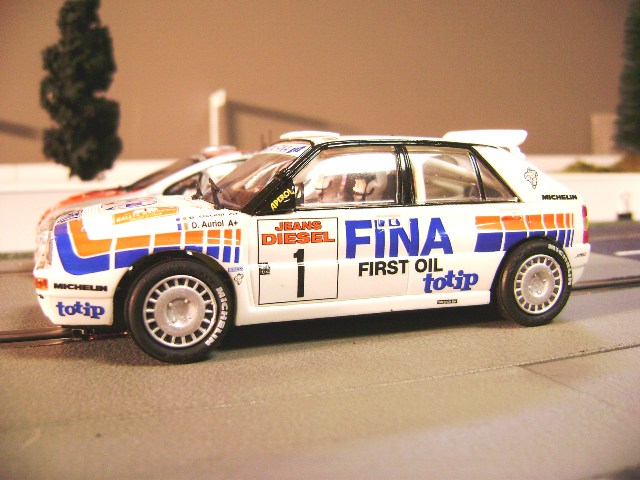 Thatís not to say that our Lancia Delta isnít a good looking car. The white body easily stands out on the track and the bright red, yes that is red although I realize my camera makes all red cars appear orange, and bright blue block-stripe decorations look very good also however in a more subdued manor. 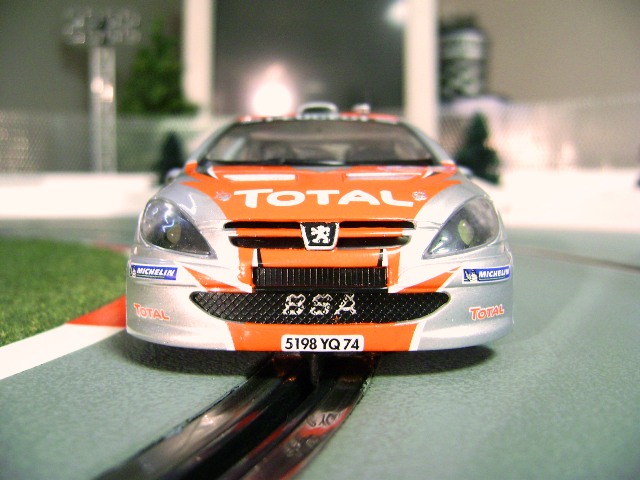 Of course you canít put too much weight in the difference in styling of both cars. Coming from different eras of racing the Peugeot represents the more modern racer of the two and the Lancia represents more of the Ďclassicí style of rally cars. 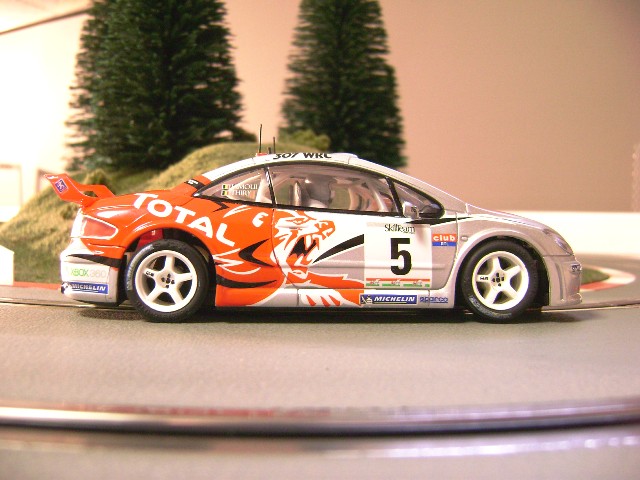 Notable separately added details for the Peugeot include four different roof mounted antenna, two different roof scoops, sturdy side view mirrors as well as an interior that boasts the familiar roll cage detailing and the driver and navigator sporting nice new helmets with communication microphones attached. 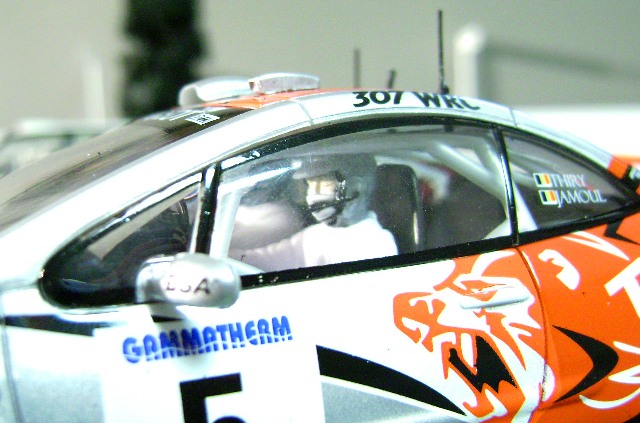 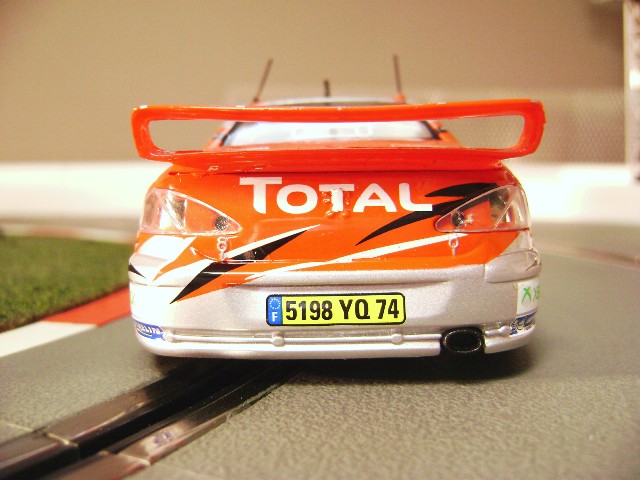 Out back the large spoiler is the dominant feature, the exhaust tip being a molded part of the carís chassis. Smaller, not so obvious details such as the tiny trunk pins are painted silver and the wheels below show signs that hand-painting still goes on at the SCX factory. 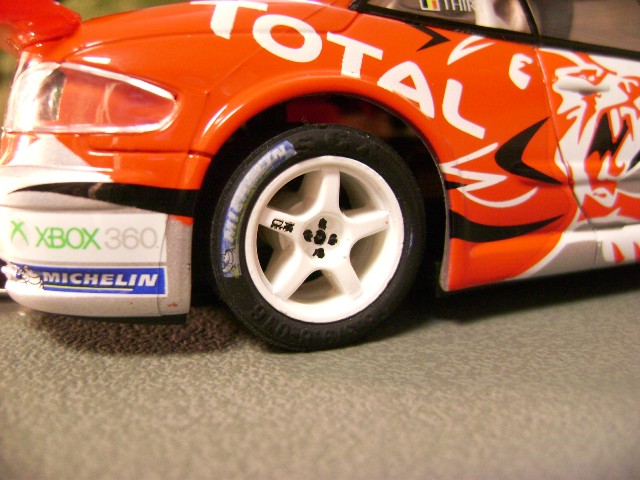 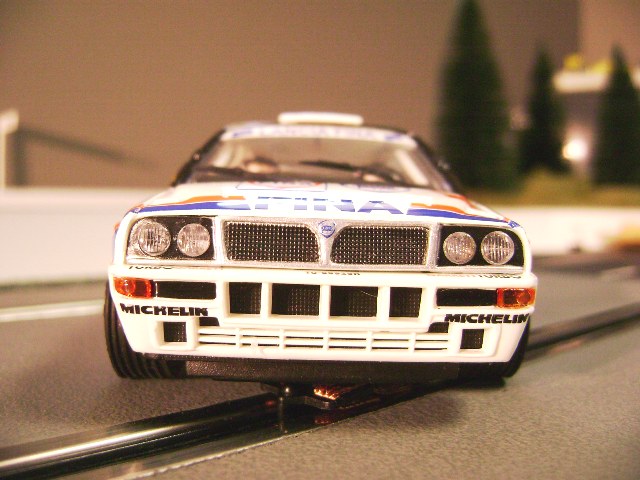 The Deltaís styling up front includes quad-headlamps and lots of grille work. Other detail features include very low profile side mirrors, you are not going to have to worry about these ever breaking off, wipers and a roof scoop and of course the new microphone helmets on the driverís of this car as well. 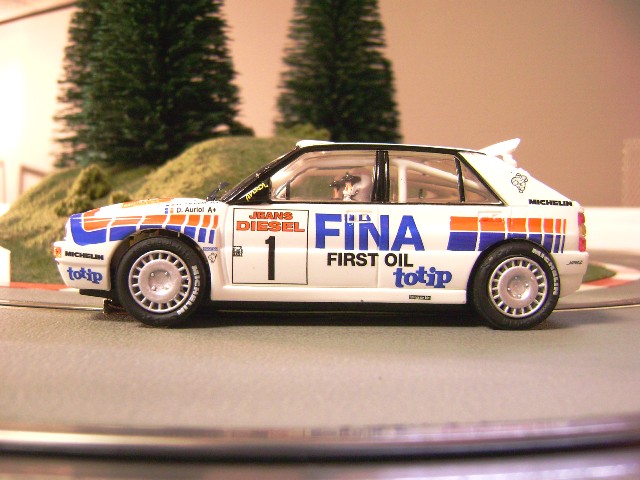 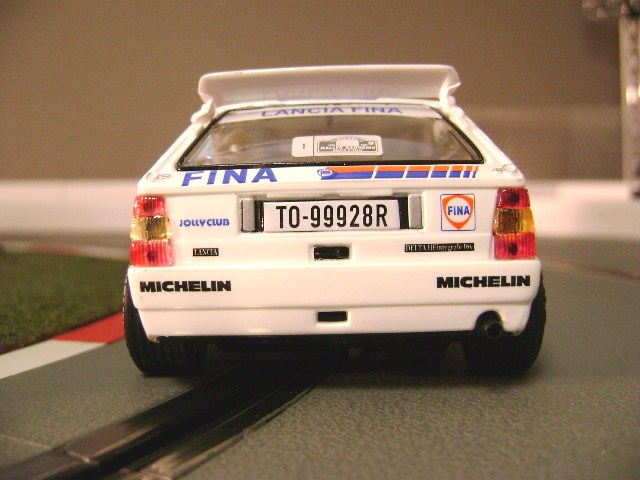 Out back the hatch wing feels flexible yet sturdy and here again the car gets a small exhaust tip poking out from under the body work. 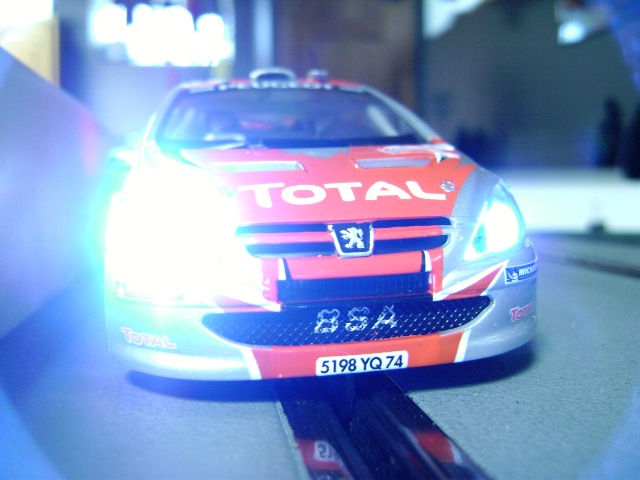 Needless to say both of the SCX cars have working front and rear lights. Above the bluish cast of the Peugeot shines brightly, the Deltaís four headlights also light the way, and below the brightness of the tail lights look like they are filtering through the white body however that is really just glare and the body does a good job of not letting the light bleed through. 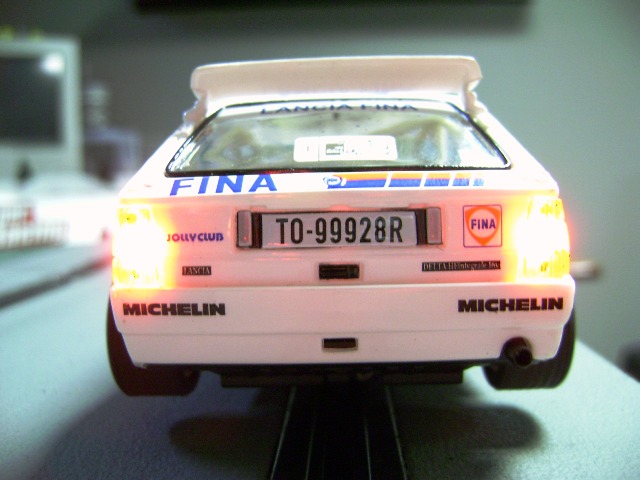 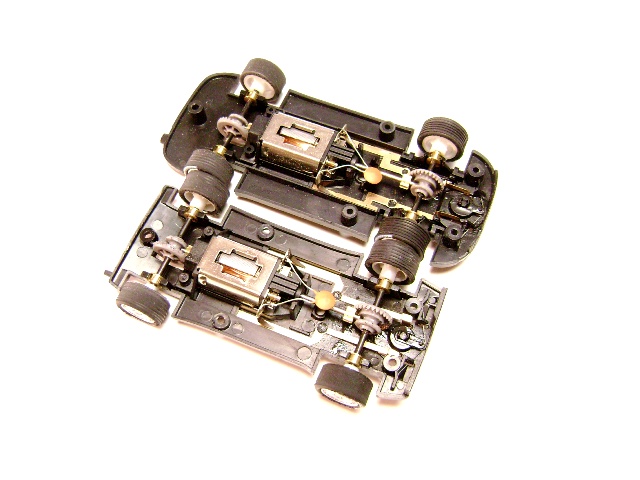 Popping the bodies off, the chassis' look very similar. The Peugeot is ever so slightly longer and that added length allows for a marginally longer guide distance from the front axle. 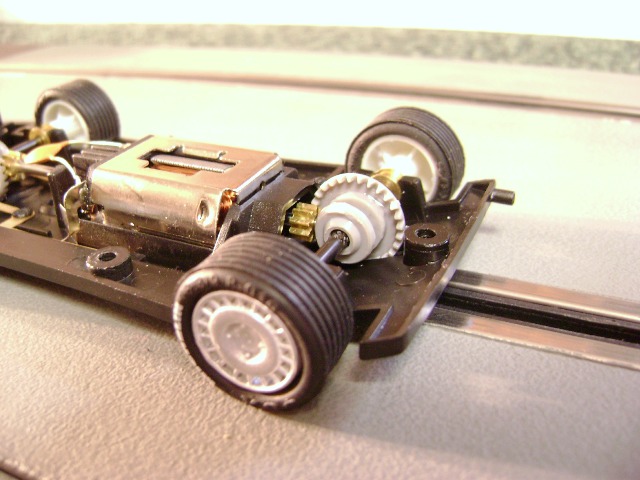 Of course both cars being all wheel drive the short shaft end of the motors power gray plastic crowns on knurled axles and the fronts below are driven with a longer drive shaft. In both cases the axles ride in brass bushings which match the brass pinions spinning the crowns. 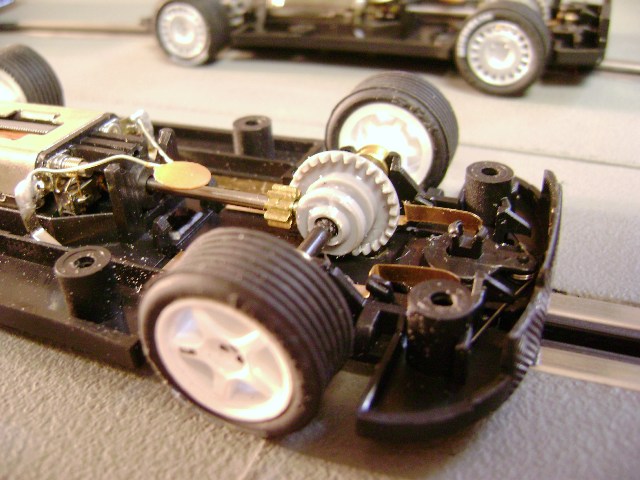  Flipping the cars over there is one noticeable difference, besides the general shape of each chassis, and that difference is the exposed SCX RX-91B motor of the Lancia Delta Integrale. In contrast the Peugeotís RX-81B is covered by the chassis and I had to remove it to see the markings on it. Just to be clear the 81B and 91B are rated exactly the same in the RPM production category. Information from SCX shows the numbering difference is relative to the motor shaft length not a performance variance. 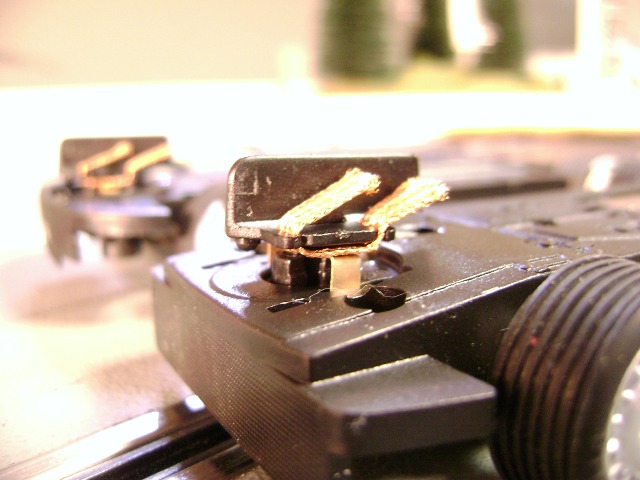 Both cars benefit from the double ended braid set up held in place by a nice deep guide that is Ďsprungí by the design of each carís electrical tab system that runs on the pan of each chassis. In addition to the spring feature both guides are also self centering which will aid the corner marshals when trying to re-slot the cars quickly. 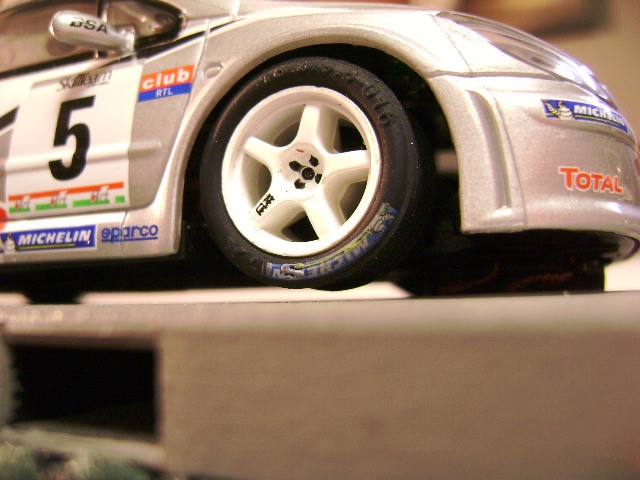 Touching my track for the first time I noticed both cars needed a bit of tweaking. Above you can see how the passenger tire is clearly not touching the track while the shot below shows the driverís side touching nicely. The Lanciaís issue was similar, with a large amount of fender clearance in the front and much closer tolerances in the back. The good news is that removing all the screws and refitting the bodies Ďun-tweakedí and mostly corrected the differences. On the Peugeot I did end up backing on of the screws a little more than the other to make both front wheels touch a little more evenly. 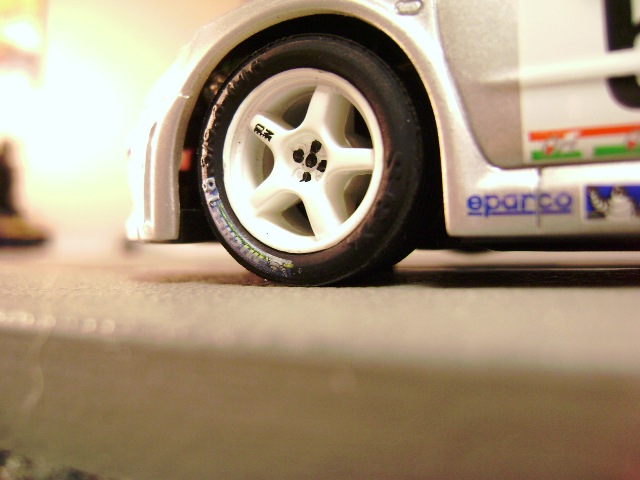 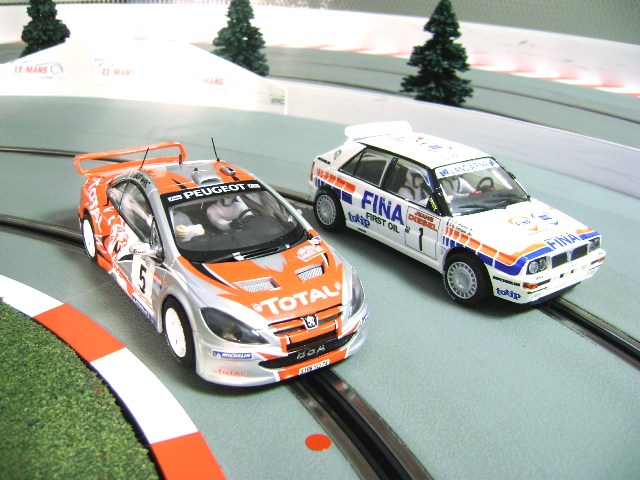 Initial magnet track runs were a bit dicey; both cars had perceived vibrations and taking the magnets out accentuated both. After some tire truing on the Peugeot the vibrations were greatly reduced although sanding first the rear tires on the Delta, then moving them to the front and sanding down the tires now moved to the rear the vibration of the Delta didnít much go away. 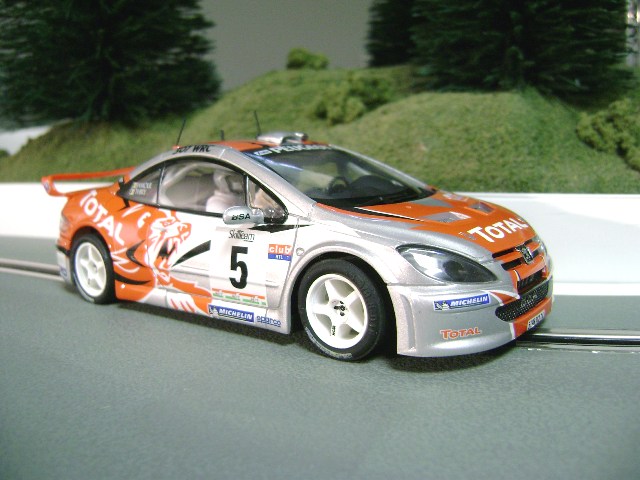 While in magnet trim both cars were within hundredths of a second from one another, the slight edge going to the Peugeot. When the magnets came out and after the tires and wheels attended to the Peugeot opened up an even greater advantage putting up fast lap times that bested the Lanciaís times by more than a half second. 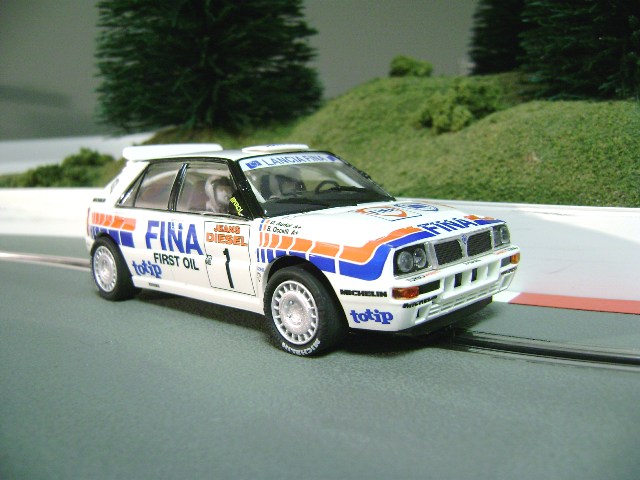 In fact the difference in speed felt different enough without looking at the time that I had to research the different motor numbers just to be certain. The vibration of the Lancia no doubt played a part yet I was reminded that all sorts of things can swing performance variables such as car length, width, balance, weight, guide placement and of course possible slight differences motor to motor. 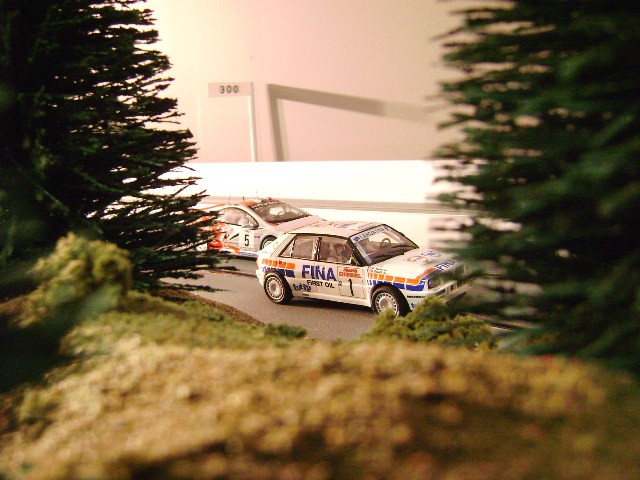 Does that mean the Lancia wasnít fun to drive? No, the speed difference wasnít enough to warrant a statement like that. I would say though that if it came down to picking one based on speed the Peugeot would be the go-to car out of this pair ending up being the more smooth and stable runner around the Slot Car Garage test track. 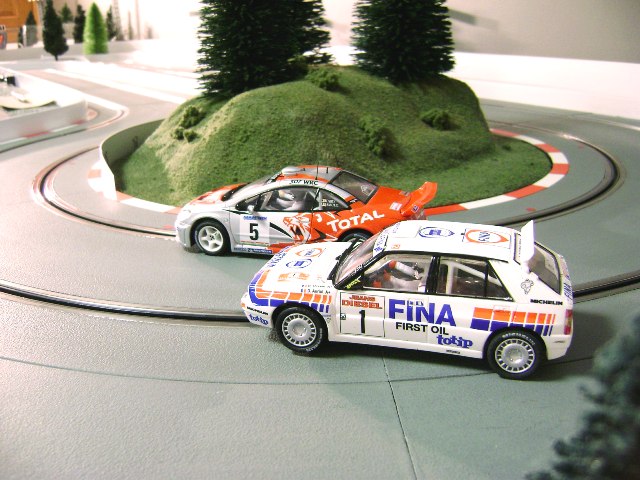 The end of another good SCX match up is upon us and I think SCX has done a nice job on both cars. I know some out there arenít giant fans of the all wheel drive rally car style racing yet from my personal experiences some of my most fun and close races have come from drifting two closely matched rally cars through a tight and twisty track. Like the newer style or prefer the more classic cars and SCX has you covered. Nice features, good looks and at a still wallet-friendly price. As always HomeRacingWorld.com would like to thank SCX Worldwide for sponsoring this review. If you have any questions feel free to contact me via my email link below. Shawn Smith - SJSlots shawn@homeracingworld.com Thanks Go To SCX For Sponsoring This Review! |
